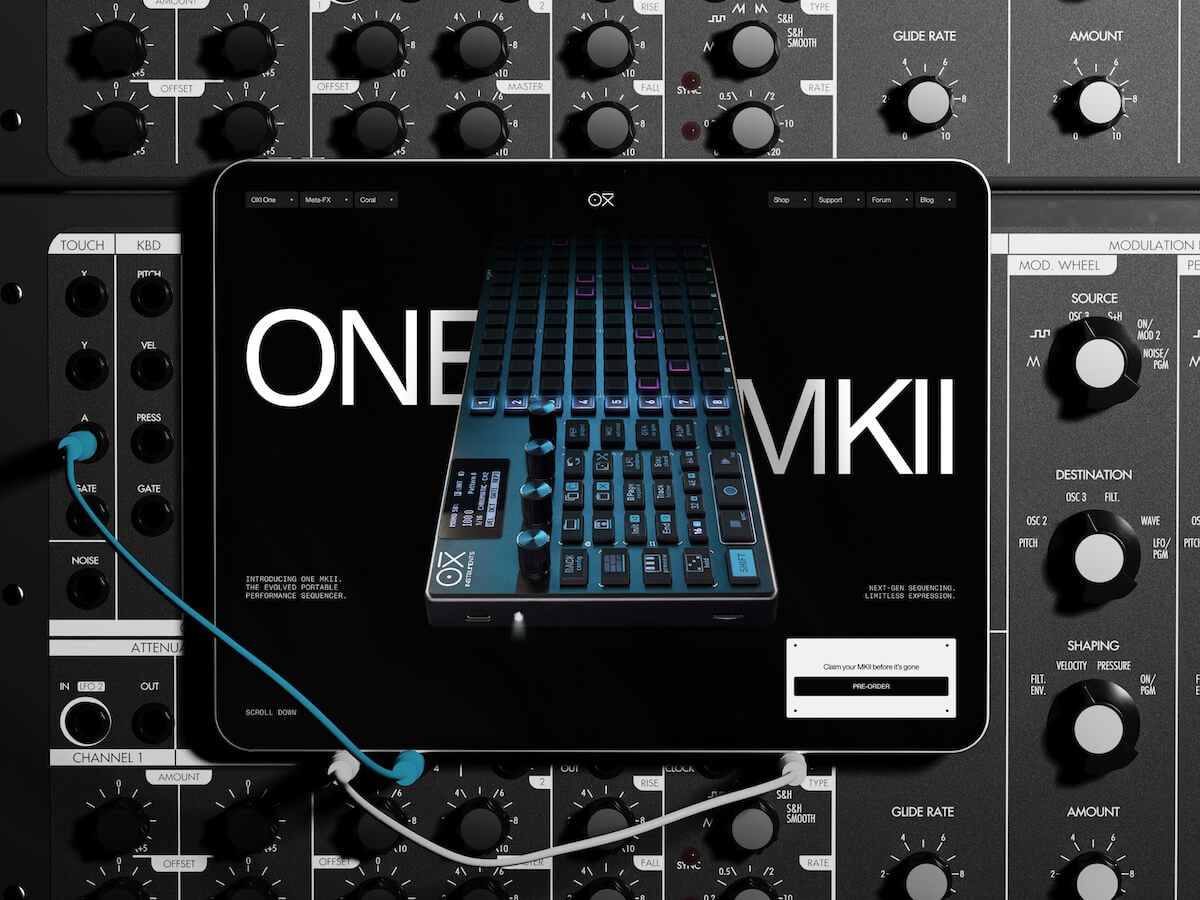Two weeks. No 3D Visuals. No panic.
We built the OXI ONE MKII website using nothing but structure and type. All to meet the deadline for the product launch and its debut in Berlin.
The Challenge
Creating a website for the launch of a new flagship product is already a high-stakes task; doing it in under 14 days, with no flawless renders, raises the bar even higher. When OXI Instruments approached us, the ONE MKII was entering its final development stage. The product was set to premiere in Berlin, and the website had to be live by that time, no extensions, no room for delay. At the same time, there was no finalized imagery, no video, and no product renders ready for use.
We had to
- Build a bold, functional website without relying on visual assets
- Reflect the character and philosophy of the ONE MKII — modular, live, expressive
- Craft a structure that would be clear to musicians and intuitive across devices
- Work in parallel with the OXI team, adjusting to changes and updates in real time
This wasn’t just about speed. It was about designing clarity under pressure, with a strict editorial mindset, where every word, margin, and interaction had to work harder than usual. These are the kinds of things you’d never guess as an outside observer or a potential customer. But constraints like these are truly a test of resilience.
The Approach
If you’ve seen other websites we’ve launched with various teams, you’ll notice they often include 3D graphics or other rich visual layers. This project, however, was a rare exception.
It was crucial to make the right call early on and to hit expectations spot-on during the concept stage. A couple of wrong turns wouldn’t be fatal, but too many missteps could easily lead to missing the deadline and delivering an underwhelming result.
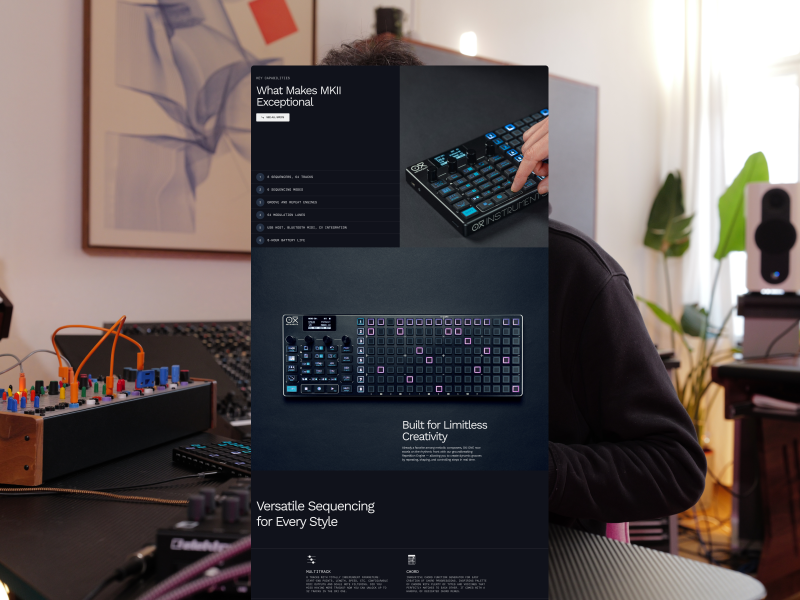
We focused on typography, photography, and rhythm. Fortunately, we were able to shape the art direction for the photos in parallel with the design process. Big thanks to Candace Janee (OXI project manager) who coordinated between me, the photographers, and everyone involved to quickly arrange compositions, lighting setups, and other details for the shoot.
Another layer of complexity was planning the broader interface and future platform in tandem with this launch. While we were only releasing two core pages at this stage, we knew the site would eventually evolve into a full eCommerce platform. Every design choice had to consider the long game from homepage and support pages to product detail layouts and checkout flows. That also meant thinking ahead about how systems like Webflow, WordPress, WooCommerce, and email automation would integrate down the line.
Typography
With no graphics to lean on, typography had to carry more weight than usual not just in terms of legibility, but in how it communicates tone, energy, and brand attitude. We opted for a bold, editorial rhythm. Headlines drive momentum across the layout, while smaller supporting text helps guide the eye without clutter.
We selected both typefaces from the same designer, Wei Huang, a type designer from Australia. Work Sans for headlines and body copy, and Fragment Mono for supporting labels and detailed descriptions.The two fonts complement each other well and are completely free to use, which allowed us to rely on Google Fonts without worrying about file formats or load sizes.
CMS System
Even though we were only launching two pages initially, the CMS was built with a full content ecosystem in mind. Product specs, updates, videos, and future campaigns all had a place in the structure. Instead of hardcoding static blocks, we built flexible content types that could evolve alongside the product line.
The idea was simple: avoid rework later. The CMS wasn’t just a backend; it was the foundation of a scalable platform. Whether we were thinking of Webflow’s CMS collections or potential integrations with WordPress and WooCommerce, the goal was to create a system that was clean, extensible, and future-ready.
Sketches. Early explorations.
I really enjoy the concept phase. It’s the moment where different directions emerge and key patterns begin to form. Whether it’s alignment, a unique sense of ornamentation, asymmetry, or something else entirely. This stage is where the visual language starts to take shape.
Here’s a look at some of the early concepts we explored. The OXI website could’ve turned out very differently.

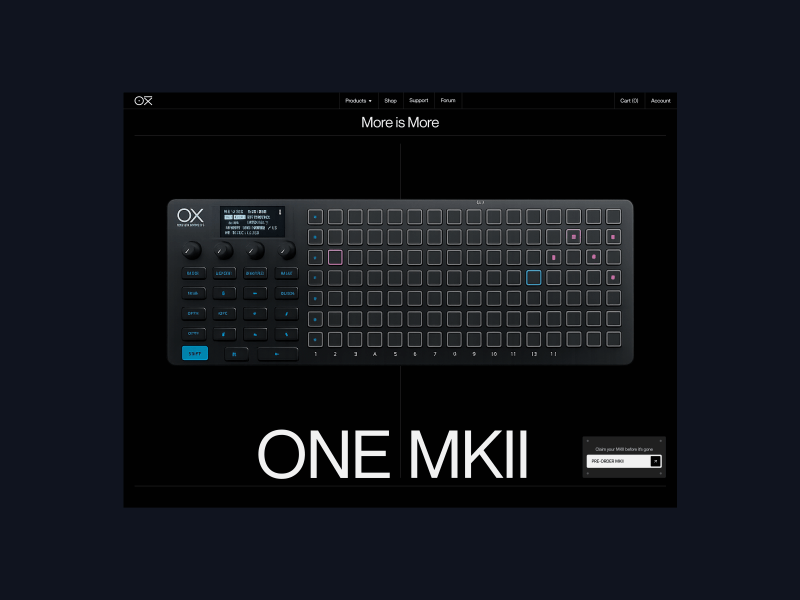
We settled on a dark version of the design partly due to the founder’s preference, and partly because the brand’s core colors (which were off-limits for changes) worked well with it. Additionally, cutting out the device from photos made it easier to integrate visuals into the layout and mask any imperfections.
Rhythm & Layout
When planning the rhythm and design, it’s important not to go overboard with creativity. As designers, we often want to add that “wow” factor but sometimes, the business just doesn’t need it.
The target audience, people in the music world, already get their visual overload during performances by their favorite artists. But when they’re shopping for a new device, they’re not looking for spectacle. They want to see the product. The details. The specs. Everything that matters.
All of it needs to be delivered clearly and accessibly. We chose the simplest approach: alternating between center-aligned and left-aligned sections, giving us the flexibility to structure the layout intuitively. Photography helps break up the technical content, and icons quickly draw attention to key features. People don’t read, they scan. We designed with that in mind.
A few shots highlighting some of my favorite sections.
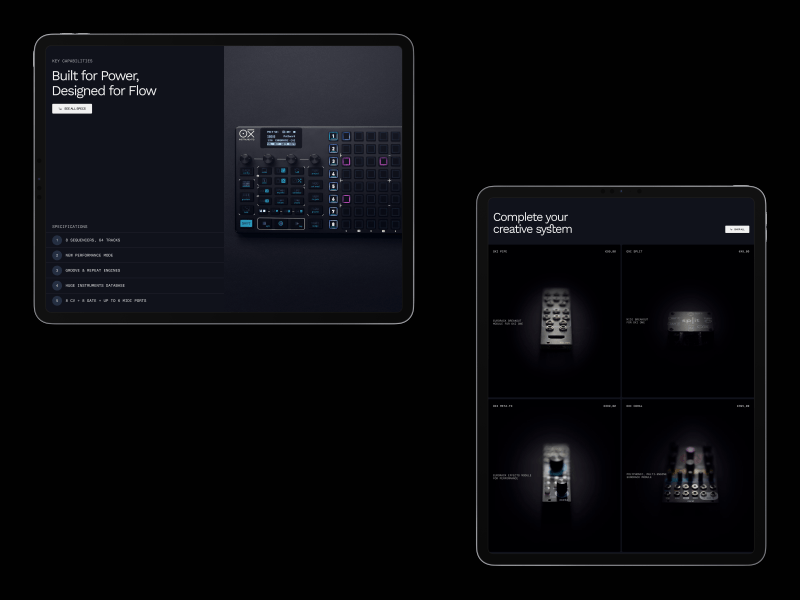
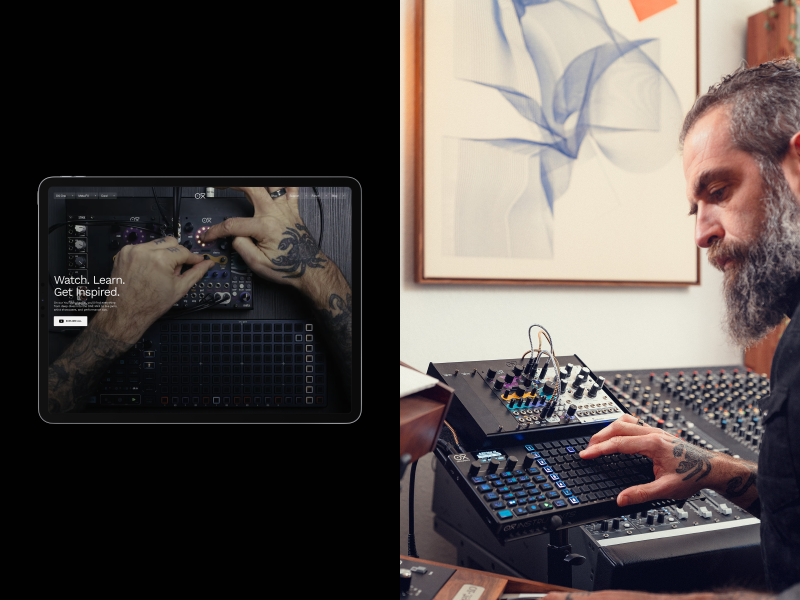

Result
The results were genuinely rewarding. The team felt a boost in motivation, and the brand’s audience and fans immediately noticed the shift highlighting how the update pushed OXI into a more professional direction.
According to my information, the pre-orders for the device sold out in less than a week. It’s always a great feeling when you’re proud of the outcome, the team is happy, and the audience responds positively. That’s what matters most.
Looking Ahead / Part Two
This was just the beginning. The second part of the project (a full eCommerce experience) is currently in the works. The core will expand, but the principles will remain the same.
I hope you’ll find the full relaunch of OXI Instruments just as exciting. Stay tuned on updates.
